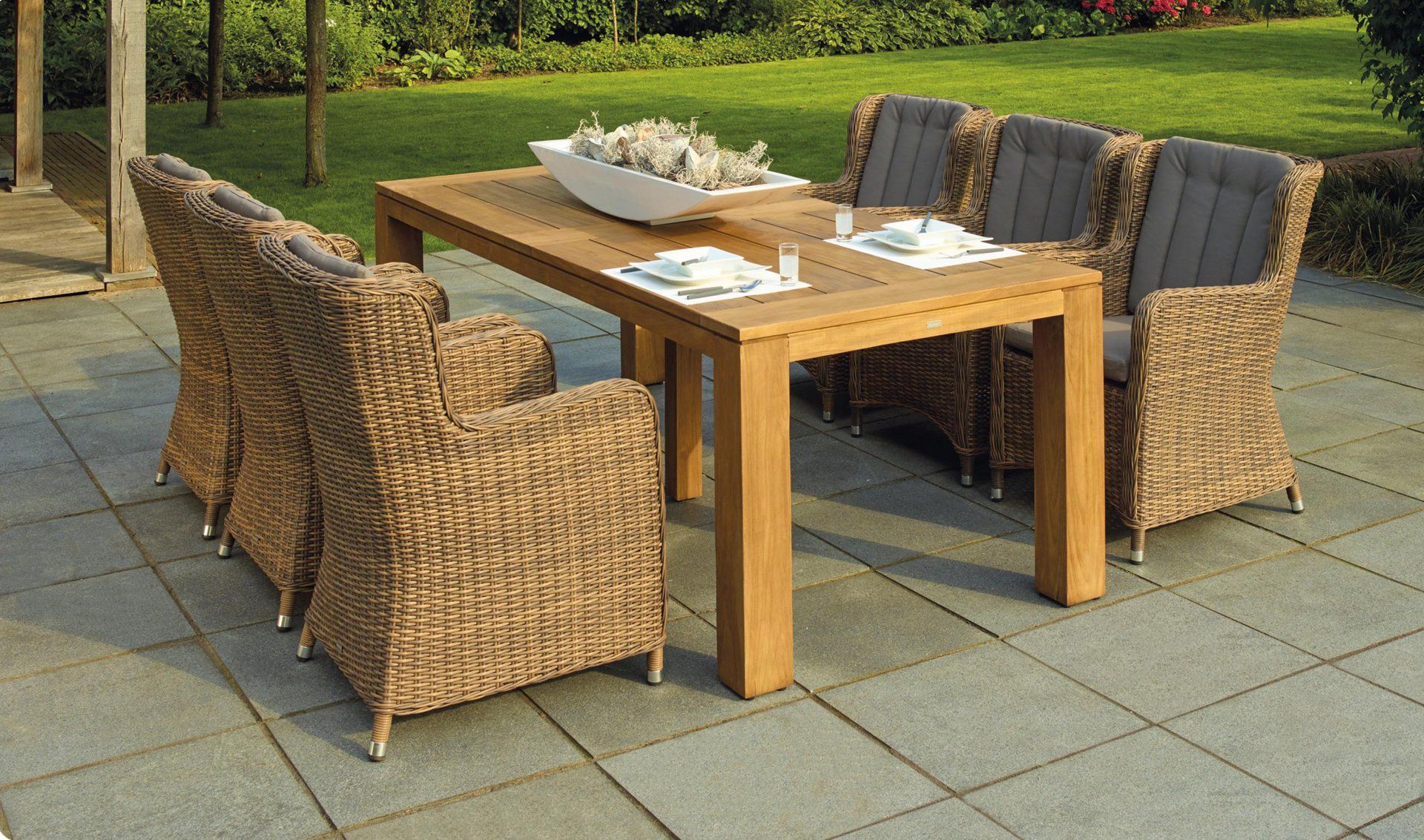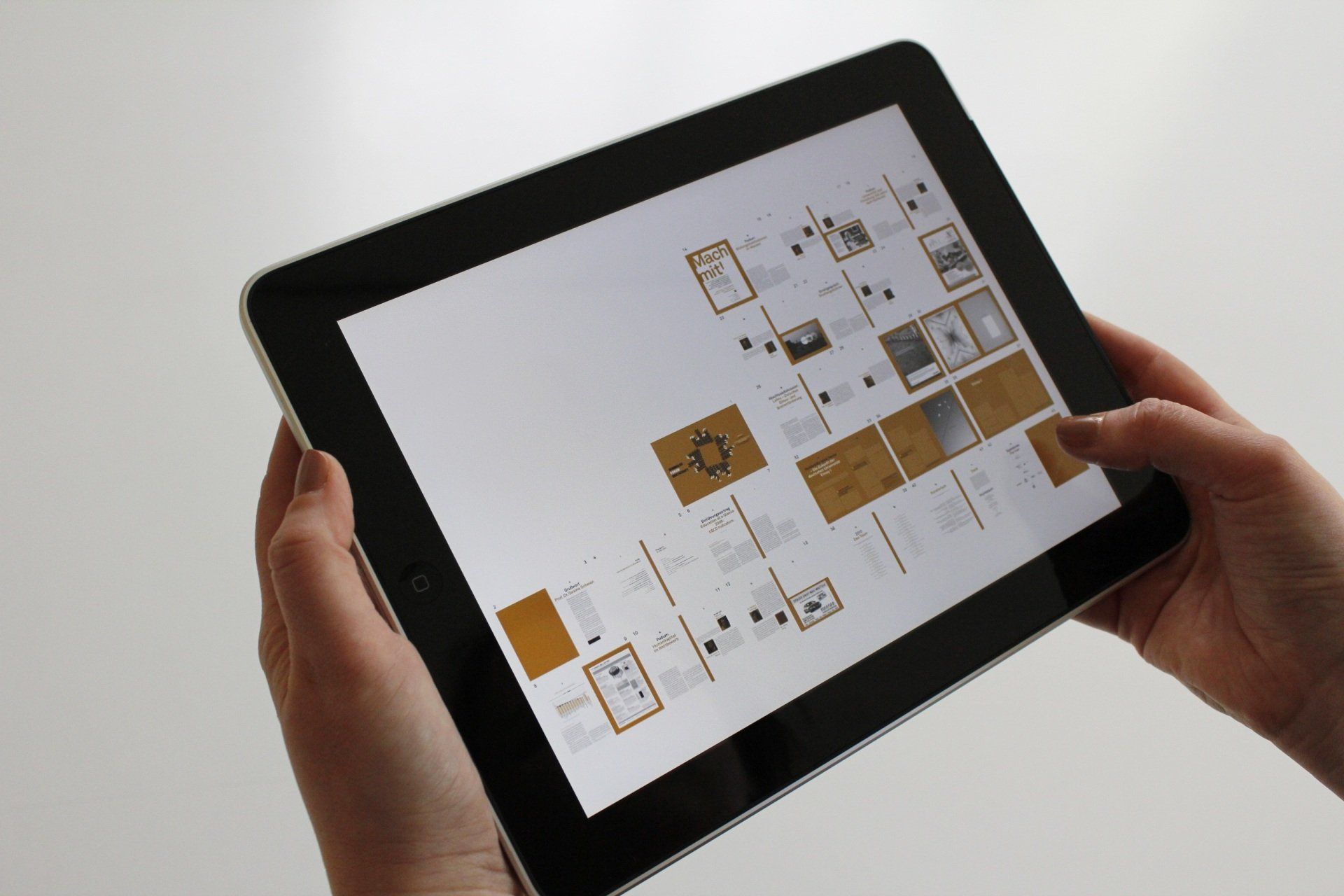Blog
Blog

December 5, 2024
The Ultimate Guide to Sustainable Building Materials As environmental awareness grows, so does the demand for sustainable building practices. One crucial aspect of eco-friendly construction is the use of sustainable building materials. These materials not only contribute to a greener planet but also offer numerous benefits in terms of durability, energy efficiency, and overall environmental impact. In this comprehensive guide, we'll explore the world of sustainable building materials, from their types and advantages to practical tips on incorporating them into your next construction project. Types of Sustainable Building Materials 1. Bamboo Known for its rapid growth and renewability, bamboo has become a popular choice for sustainable building. It's a versatile material used for flooring, furniture, and even structural elements. Bamboo absorbs carbon dioxide and releases oxygen, making it an excellent choice for reducing a building's carbon footprint. 2. Reclaimed Wood Using reclaimed wood from old barns, factories, or other structures not only gives a unique character to a building but also reduces the demand for new lumber. Reclaimed wood is often used for flooring, beams, and decorative elements, providing a second life to materials that would otherwise go to waste. 3. Recycled Steel Steel is a durable and recyclable material, making it an eco-friendly option for construction. Recycled steel has a lower environmental impact than using new materials, and it maintains its strength and integrity even after being recycled multiple times. It is commonly used in the construction of framing and structural elements. 4. Recycled Glass Incorporating recycled glass into building materials, such as countertops, tiles, and insulation, helps divert waste from landfills. Glass recycling requires less energy than producing new glass, making it an environmentally responsible choice for sustainable construction. 5. Rammed Earth Rammed earth construction involves compacting natural raw materials, such as earth, chalk, lime, or gravel, into solid walls. This ancient building technique is not only sustainable but also provides excellent thermal mass, helping regulate indoor temperatures naturally. 6. Hempcrete Hempcrete is a bio-composite material made from the inner woody fibers of the hemp plant mixed with lime and water. It's a lightweight, durable, and breathable material that can be used for insulation and construction. Hemp absorbs carbon dioxide during its growth, making hempcrete a carbon-negative building material. 7. Cork Cork, harvested from the bark of cork oak trees, is a renewable and sustainable material. It's commonly used for flooring, wall coverings, and insulation. The extraction process does not harm the trees, allowing them to regenerate and continue absorbing carbon dioxide. 8. Straw Bales Straw bale construction involves using straw bales as building blocks for walls. This method provides excellent insulation properties, and straw is an agricultural byproduct, making it an environmentally friendly choice. Straw bale buildings are energy-efficient and have a minimal ecological footprint. 9. Solar Tiles Integrating solar technology into building materials is a sustainable way to harness renewable energy. Solar tiles or solar shingles can replace traditional roofing materials, allowing buildings to generate electricity while maintaining a visually appealing and functional roof. 10. Precast Concrete While concrete is a commonly used construction material, precast concrete offers a more sustainable option. Precast concrete is manufactured offsite, reducing waste and energy consumption during the construction process. It also provides durability and longevity in building structures. Advantages of Sustainable Building Materials 1. Environmental Impact Reduction The primary advantage of using sustainable building materials is the significant reduction in environmental impact. By choosing materials that are renewable, recycled, or have a lower carbon footprint, construction projects can contribute to the preservation of natural resources and biodiversity. 2. Energy Efficiency Many sustainable materials, such as recycled steel, cork, and rammed earth, offer excellent thermal properties. This results in improved energy efficiency, as buildings constructed with these materials often require less energy for heating and cooling. The energy savings contribute to a lower overall environmental impact throughout the building's lifespan. 3. Longevity and Durability Sustainable building materials are often chosen for their durability and longevity. Materials like recycled steel and precast concrete have a longer lifespan than traditional alternatives, reducing the need for frequent replacements and repairs. This not only saves resources but also minimizes the environmental impact associated with manufacturing new materials. 4. Waste Reduction Materials such as reclaimed wood and recycled steel contribute to waste reduction by repurposing materials that would otherwise end up in landfills. This practice aligns with the principles of the circular economy, where resources are reused and recycled to minimize waste and environmental degradation. 5. Improved Indoor Air Quality Some sustainable materials, such as low-VOC (volatile organic compound) paints, finishes, and adhesives, contribute to better indoor air quality. Low-VOC products release fewer harmful chemicals into the air, creating a healthier and more comfortable living or working environment. Incorporating Sustainable Building Materials into Your Project 1. Start with a Green Design The first step to incorporating sustainable building materials is to start with a green design. Work with architects and designers who prioritize sustainability and can help you select materials that align with your environmental goals. 2. Research and Choose Wisely Take the time to research and choose sustainable materials that fit the specific needs of your project. Consider factors such as the material's source, manufacturing process, durability, and recyclability. Look for third-party certifications, such as LEED (Leadership in Energy and Environmental Design), to ensure the sustainability of your chosen materials. 3. Local and Regional Sourcing Opt for locally sourced materials to reduce transportation-related carbon emissions. Local materials also support regional economies and may have a lower environmental impact compared to materials sourced from distant locations. 4. Collaborate with Eco-Friendly Suppliers Build relationships with suppliers who prioritize sustainability. Many suppliers now offer eco-friendly alternatives and can provide information on the environmental impact of different materials. Collaborating with like-minded suppliers ensures a smoother integration of sustainable materials into your construction project. 5. Consider Life Cycle Analysis Evaluate the life cycle of the materials you intend to use. Consider not only the environmental impact during manufacturing but also the long-term effects, including maintenance, replacement, and disposal. Life cycle analysis helps make informed decisions about the overall sustainability of a material. 6. Certifications and Standards Look for materials that have recognized certifications and meet established sustainability standards. Certifications such as Cradle to Cradle, Forest Stewardship Council (FSC), and GreenGuard provide assurance that the materials meet specific environmental criteria. 7. Educate Your Team Ensure that your construction team is educated and trained on the proper handling and installation of sustainable materials. Some eco-friendly materials may require specific construction techniques, and proper installation is crucial for maximizing their benefits. 8. Plan for Deconstruction and Recycling Consider the end-of-life cycle of the materials you choose. Plan for deconstruction and recycling to ensure that materials can be repurposed or recycled rather than ending up in landfills. Designing with disassembly in mind promotes a circular approach to construction. Challenges and Considerations While sustainable building materials offer numerous benefits, there are challenges and considerations to keep in mind: 1. Cost Considerations In some cases, sustainable materials may have a higher upfront cost than traditional alternatives. However, it's essential to consider the long-term benefits, including energy savings, reduced maintenance costs, and positive environmental impact. 2. Availability and Sourcing Challenges Certain sustainable materials may have limited availability in certain regions. It's crucial to plan and source materials well in advance to avoid delays in construction. 3. Balancing Aesthetics and Sustainability Achieving a balance between aesthetics and sustainability can be challenging. However, with the growing demand for eco-friendly options, the design industry is continuously expanding its range of visually appealing sustainable materials. 4. Educating Stakeholders Educating clients, contractors, and other stakeholders about the benefits of sustainable materials is essential. Clear communication and a shared commitment to environmental responsibility help ensure the successful implementation of sustainable building practices. Conclusion In conclusion, the use of sustainable building materials is a crucial step toward creating a more eco-friendly and resilient built environment. From bamboo and recycled steel to cork and hempcrete, there is a wide range of materials available to suit different construction needs. By incorporating these materials into your projects, you not only contribute to a healthier planet but also enjoy the numerous benefits of increased energy efficiency, improved indoor air quality, and reduced environmental impact. As the construction industry continues to evolve, embracing sustainable building practices is not just a trend but a responsible and necessary approach to shaping a greener and more sustainable future. Whether you are a homeowner, builder, or architect, making informed choices about the materials you use can have a lasting and positive impact on the world we live in. Let sustainability guide your construction journey, and together, we can build a better tomorrow.

November 20, 2024
The Dos and Don'ts of Hiring a Contractor for Your Home Remodel Embarking on a home remodel is an exciting journey, but choosing the right contractor can make all the difference in the success of your project. Whether you're renovating your kitchen, adding a new room, or giving your entire home a facelift, finding a reliable and skilled contractor is crucial. In this blog post, we'll explore the dos and don'ts of hiring a contractor to help you navigate the process and ensure a smooth and successful home remodeling experience. The Dos: 1. Do Your Research Before diving into the hiring process, take the time to research potential contractors thoroughly. Ask for recommendations from friends, family, or colleagues, and explore online reviews and testimonials. Look for contractors with a solid reputation, relevant experience, and a portfolio of completed projects that align with your vision. 2. Check for Licensing and Insurance Verify that the contractor is licensed and insured. A valid license ensures that the contractor has met the necessary requirements and possesses the skills needed for the job. Insurance, including liability and worker's compensation, protects you and the contractor in case of accidents or damages during the project. 3. Ask for References Don't hesitate to ask potential contractors for references from previous clients. Contact these references to inquire about their experience working with the contractor. Ask about the quality of work, communication, adherence to timelines, and any unforeseen issues that arose during the project. 4. Get Multiple Bids Obtain bids from several contractors to compare prices and services. While cost is an important factor, also consider the contractor's reputation, experience, and the details of their proposals. A comprehensive bid should include a breakdown of costs, materials, project timeline, and payment schedule. 5. Clearly Define the Scope of Work Provide a detailed and clear description of your project to potential contractors. Outline your expectations, preferred materials, and any specific design elements. A well-defined scope of work helps contractors provide accurate bids and ensures that everyone is on the same page from the beginning. 6. Check the Contractor's Communication Style Effective communication is key to a successful remodeling project. Pay attention to how responsive and communicative the contractor is during the initial stages. A contractor who is attentive to your questions, concerns, and preferences is more likely to maintain clear communication throughout the project. 7. Review the Contract Thoroughly Once you've selected a contractor, carefully review the contract before signing. Ensure that all project details, including costs, timelines, payment schedules, and warranties, are clearly outlined. Don't hesitate to seek clarification on any ambiguous or unclear terms before moving forward. 8. Set Realistic Expectations Have realistic expectations regarding the timeline, budget, and potential challenges that may arise during the remodel. Discuss these expectations with the contractor to establish a clear understanding of what can be achieved within your constraints. 9. Ask About Permits and Regulations Inquire about the necessary permits and local building regulations for your project. A reputable contractor should be familiar with local requirements and obtain the necessary permits on your behalf. Failure to comply with regulations can lead to delays and additional expenses. 10. Establish a Payment Schedule Work with the contractor to establish a fair and transparent payment schedule. Avoid making substantial upfront payments. Instead, set milestones tied to project progress. This approach ensures that payments are made as work is completed, providing you with leverage in case of any issues. The Don'ts: 1. Don't Hire Without Checking References Avoid hiring a contractor without checking references. References provide valuable insights into the contractor's workmanship, reliability, and professionalism. Skipping this step can leave you with regrets once the project is underway. 2. Don't Overlook Licensing and Insurance Never overlook the importance of licensing and insurance. Hiring an unlicensed or uninsured contractor can lead to legal complications, financial risks, and subpar workmanship. Protect your investment by verifying the contractor's credentials. 3. Don't Rush the Decision-Making Process Take your time in the decision-making process. Rushing to hire a contractor without thorough research and consideration may lead to regrets later. A well-informed decision based on careful evaluation ensures a positive and successful remodeling experience. 4. Don't Ignore Red Flags Pay attention to red flags during the initial stages of communication with a contractor. If a contractor is unresponsive, avoids providing references, or seems unwilling to address your concerns, consider these as warning signs. Trust your instincts and explore other options. 5. Don't Choose Based Solely on Price While cost is a significant factor, don't make your decision solely based on the lowest bid. Quality of work, experience, and reputation should weigh heavily in your decision-making process. Choosing a contractor solely because they offer the lowest price can result in subpar workmanship and unexpected issues down the line. 6. Don't Skip the Contract Review Never skip the thorough review of the contract. The contract is a legally binding document that outlines the terms and conditions of the project. Skipping this step can lead to misunderstandings, disputes, and difficulties in enforcing agreements. 7. Don't Pay in Full Upfront Avoid paying the full project cost upfront. A reputable contractor will expect payment milestones tied to project progress. Paying in full before work begins is a risky move that may leave you with little recourse in case of delays or issues. 8. Don't Neglect Permits and Regulations Ignoring permits and local regulations can result in serious consequences. A contractor who dismisses the need for permits or fails to comply with regulations may compromise the quality and safety of the project. Ensure that all necessary permits are obtained before work begins. 9. Don't Assume the Timeline While it's essential to have a project timeline, don't assume it will be without challenges. Unforeseen issues, weather delays, or material shortages can impact the timeline. Be prepared for potential adjustments and maintain open communication with your contractor. 10. Don't Tolerate Poor Communication If a contractor exhibits poor communication skills during the hiring process, it's likely to persist throughout the project. Clear and transparent communication is crucial for a successful remodeling experience. If a contractor is unresponsive or dismissive of your concerns early on, consider alternative options. In Conclusion Hiring a contractor for your home remodel is a significant decision that requires careful consideration. By following the dos and don'ts outlined above, you can navigate the process with confidence and increase the likelihood of a successful and stress-free remodeling experience. Remember, the right contractor is not only skilled but also reliable, communicative, and aligned with your vision for your dream home. Happy remodeling!

October 9, 2024
Revamping Your Outdoor Space: Trendy Ideas for a Stylish Garden Makeover Your outdoor space is an extension of your home, offering a tranquil retreat and a place to connect with nature. If you're looking to transform your garden into a stylish haven, consider these trendy ideas for a garden makeover. From modern design elements to sustainable practices, these suggestions will elevate your outdoor space and make it a stylish sanctuary for relaxation and entertainment. 1. Outdoor Lounge Areas Create inviting outdoor lounge areas where you can unwind and entertain guests. Invest in comfortable, weather-resistant furniture such as lounge chairs, sofas, and hammocks. Incorporate plush cushions, throw pillows, and outdoor rugs to add warmth and style. Consider adding a fire pit or outdoor fireplace for cozy evenings under the stars. Additional Tip: Choose furniture and textiles in a cohesive color palette to create a harmonious and inviting atmosphere. 2. Vertical Gardens and Green Walls Maximize your garden's visual appeal and space efficiency by incorporating vertical gardens or green walls. These features not only add a touch of modernity but also contribute to better air quality. Grow a variety of plants, flowers, or even herbs in vertically stacked containers or wall-mounted planters. Additional Tip: Opt for low-maintenance plants to ensure your vertical garden remains lush with minimal effort. 3. Al Fresco Dining Spaces Transform your garden into an outdoor dining oasis with a stylish dining area. Invest in a durable dining table and chairs designed for outdoor use. Enhance the ambiance with string lights, lanterns, or a chandelier. Consider adding shade with a pergola, umbrella, or retractable awning for comfortable daytime dining. Additional Tip: Choose weather-resistant and easy-to-clean materials for your outdoor dining furniture. 4. Sustainable Landscaping Embrace sustainable landscaping practices to create an eco-friendly garden. Choose native plants that require less water and maintenance. Incorporate drought-tolerant landscaping, rain gardens, and permeable surfaces to minimize water runoff. Consider using recycled or repurposed materials for hardscaping elements. Additional Tip: Install a rainwater harvesting system to collect rainwater for irrigation, reducing your reliance on municipal water sources. 5. Zen and Meditation Spaces Design a tranquil retreat within your garden with a dedicated zen or meditation space. Use elements such as bamboo, rocks, and low-maintenance plants to create a peaceful atmosphere. Add comfortable seating, meditation cushions, or a small water feature for relaxation. This space can serve as a personal sanctuary for mindfulness and reflection. Additional Tip: Integrate natural scents like lavender or eucalyptus to enhance the calming ambiance. 6. Art Installations and Sculptures Infuse creativity into your garden by incorporating art installations and sculptures. Choose pieces that resonate with your style, whether it's modern, abstract, or traditional. Sculptures can serve as focal points and add a unique touch to your outdoor space. Consider rotating or updating the art to keep the garden dynamic. Additional Tip: Opt for weather-resistant materials like metal or stone for outdoor sculptures to ensure longevity. 7. Smart Garden Technology Bring your garden into the digital age with smart garden technology. Install smart irrigation systems that adjust watering schedules based on weather conditions. Use outdoor smart lighting for energy-efficient and customizable illumination. Implement smart sensors to monitor soil conditions, ensuring optimal growth for your plants. Additional Tip: Connect your smart garden devices to a central hub for seamless control and automation. 8. Colorful and Patterned Tiles Upgrade your garden's flooring with colorful and patterned tiles. Whether you choose ceramic, porcelain, or cement tiles, bold patterns and vibrant colors can add a touch of personality to your outdoor space. Consider creating a mosaic pathway, a tiled patio, or even an accent wall with eye-catching tiles. Additional Tip: Opt for slip-resistant tiles with a matte finish to ensure safety, especially in wet conditions. 9. Bee-Friendly Gardens Promote biodiversity and support pollinators by creating a bee-friendly garden. Choose flowering plants that attract bees, butterflies, and other pollinating insects. Incorporate a variety of colors and shapes to create a visually appealing garden while providing essential habitats for these beneficial creatures. Additional Tip: Avoid using pesticides that may harm pollinators and consider installing bee hotels for solitary bee species. 10. Outdoor Kitchens and Barbecue Areas Elevate your outdoor entertaining experience by incorporating an outdoor kitchen or barbecue area. Design a functional cooking space with a built-in grill, countertop, and storage. Add seating options such as bar stools or an outdoor dining table nearby. This setup allows you to cook, dine, and socialize seamlessly in your garden. Additional Tip: Choose durable and weather-resistant materials for outdoor kitchen surfaces and cabinets. Bonus Tips for a Successful Garden Makeover: A. Regular Maintenance and Upkeep To keep your garden looking stylish and well-maintained, invest time in regular upkeep. Prune plants, trim hedges, and remove debris to ensure a tidy appearance. Clean outdoor furniture, check for any repairs, and replace or update elements as needed. B. Seasonal Refresh Embrace the changing seasons by introducing seasonal elements to your garden. Plant seasonal flowers, update cushions and textiles, and adjust outdoor decor to reflect the colors and themes of each season. This allows your garden to evolve and stay visually appealing year-round. C. Diverse Plant Selection Choose a diverse selection of plants to create a dynamic and visually interesting garden. Combine different textures, heights, and colors for a layered and harmonious look. Consider plants with varying bloom times to ensure your garden remains vibrant throughout the year. D. Create Cozy Nooks and Seating Areas In addition to larger lounge and dining spaces, create cozy nooks and intimate seating areas within your garden. Use garden benches, Adirondack chairs, or even a hammock to provide secluded spots for relaxation or reading. In Conclusion Revamping your outdoor space with trendy and stylish ideas can transform your garden into a haven of beauty and tranquility. Whether you're drawn to modern lounging areas, sustainable landscaping, or vibrant tile patterns, there are endless possibilities to express your personal style in your garden. With a thoughtful approach, a bit of creativity, and a touch of greenery, you can create a garden that reflects your lifestyle and becomes a stylish retreat for years to come. Happy gardening!

September 16, 2024
Transforming Your Home with Smart Technology: A Guide to Creating a Modern and Connected Living Space In the era of technological advancement, smart home technology has emerged as a game-changer, offering convenience, efficiency, and a modern touch to our living spaces. Whether you're a tech enthusiast or a novice, integrating smart technology into your home can elevate your lifestyle and make daily tasks more streamlined. In this blog post, we'll explore the exciting world of smart home technology and provide a comprehensive guide to help you transform your home into a modern, connected haven. Understanding Smart Home Technology What is Smart Home Technology? Smart home technology refers to the integration of devices and systems that can be remotely controlled and automated to enhance the functionality and efficiency of a home. These devices are connected to the internet and can communicate with each other, offering a seamless and interconnected living experience. Key Components of Smart Home Technology Smart Devices: These include smart thermostats, lights, locks, cameras, speakers, and more. These devices can be controlled remotely through a smartphone or other smart devices. Hub or Controller: A central hub or controller serves as the command center for smart devices, allowing users to manage and coordinate various devices from a single interface. Connectivity: Smart devices are connected through protocols such as Wi-Fi, Bluetooth, Zigbee, or Z-Wave, enabling communication and coordination between devices. Voice Control: Many smart devices can be voice-controlled using virtual assistants like Amazon Alexa, Google Assistant, or Apple's Siri. Transforming Your Home with Smart Technology 1. Starting with the Basics: Lighting and Thermostats Smart Lighting: Replace traditional bulbs with smart bulbs or switches. Control the intensity, color, and schedule of your lights through a smartphone app or voice commands. Additional Tip: Explore color-changing bulbs to create mood lighting for different occasions. Smart Thermostats: Upgrade your heating and cooling systems with a smart thermostat. Adjust temperature settings remotely, create schedules, and optimize energy usage. Additional Tip: Some smart thermostats learn your preferences and adjust settings automatically for energy efficiency. 2. Securing Your Home: Smart Security Systems Smart Cameras: Install smart security cameras for real-time monitoring of your home. Many cameras offer motion detection, night vision, and cloud storage for recorded footage. Additional Tip: Choose cameras with two-way audio for communication and deterrence. Smart Doorbell: Enhance your door security with a smart doorbell. Receive notifications when someone rings the bell, and use a camera to see and communicate with visitors. Additional Tip: Some smart doorbells have facial recognition features for added security. Smart Locks: Upgrade to smart locks that can be controlled remotely. Grant access to guests, receive alerts on lock activity, and integrate with other security devices. Additional Tip: Some smart locks can automatically lock or unlock based on your proximity using geofencing. 3. Creating an Entertainment Hub: Smart Audio and Video Systems Smart Speakers: Integrate smart speakers into your home for voice-controlled audio. Stream music, ask for information, and control other smart devices using virtual assistants. Additional Tip: Create a multi-room audio system for synchronized music throughout your home. Smart TVs and Streaming Devices: Invest in a smart TV or add a streaming device to your existing television. Access streaming services, control content with voice commands, and enjoy a connected entertainment experience. Additional Tip: Use smart plugs to turn traditional devices into smart ones, allowing remote control. 4. Streamlining Daily Tasks: Smart Appliances Smart Refrigerators: Explore refrigerators with built-in touchscreens and internet connectivity. Keep track of groceries, create shopping lists, and even stream content while in the kitchen. Additional Tip: Some smart fridges have cameras inside, so you can check your fridge's contents remotely. Smart Appliances: Upgrade kitchen and laundry appliances to smart versions. Control ovens, dishwashers, washing machines, and dryers from your smartphone. Additional Tip: Opt for appliances that can be integrated with your smart home hub for centralized control. 5. Enhancing Comfort: Smart Home Automation Smart Blinds and Curtains: Automate your window coverings with smart blinds or curtains. Schedule them to open and close based on your preferences or the time of day. Additional Tip: Integrate with sensors to automatically adjust based on sunlight or temperature. Smart Home Automation Systems: Invest in a comprehensive home automation system. Connect various smart devices and create customized scenes or routines for different scenarios. Additional Tip: Use automation to synchronize multiple devices, such as turning off lights, adjusting the thermostat, and locking doors when you leave. 6. Prioritizing Energy Efficiency: Smart Energy Management Smart Thermostats (Again!): Smart thermostats not only offer comfort but also contribute to energy efficiency. Set schedules, monitor usage, and receive insights on how to optimize energy consumption. Additional Tip: Some smart thermostats provide energy reports and suggest ways to reduce energy usage. Smart Plugs and Outlets: Use smart plugs to control traditional devices remotely. Monitor energy usage and set schedules to reduce standby power. Additional Tip: Combine smart plugs with automation for intelligent energy management. 7. Embracing Voice Control: Virtual Assistants Amazon Alexa, Google Assistant, or Apple HomeKit: Choose a virtual assistant that aligns with your preferences and devices. Use voice commands to control smart devices, ask for information, and streamline tasks. Additional Tip: Set up routines for more complex commands or scenarios with a single voice command. Voice-Activated Appliances: Some appliances and devices come with built-in virtual assistant compatibility. Enjoy hands-free control and a fully integrated smart home experience. Additional Tip: Check for firmware updates to ensure compatibility with the latest features. 8. Smart Outdoor Living: Connected Outdoor Spaces Smart Sprinkler Systems: Upgrade your irrigation system with a smart sprinkler controller. Monitor weather forecasts, adjust watering schedules remotely, and conserve water. Additional Tip: Some systems use soil moisture sensors to optimize watering based on actual plant needs. Outdoor Smart Lighting: Extend your smart lighting to outdoor spaces. Illuminate pathways, gardens, or patios with smart outdoor lights that can be controlled through a smartphone app. Additional Tip: Use motion sensors to enhance security and conserve energy. 9. Data Security and Privacy Secure Wi-Fi Network: Ensure your Wi-Fi network is secure with a strong password and encryption. Regularly update your router's firmware to patch security vulnerabilities. Additional Tip: Use a separate network for your smart devices to isolate them from your main network. Regular Software Updates: Keep all smart devices' firmware and software up to date. Manufacturers release updates to fix security issues and improve functionality. Additional Tip: Enable automatic updates when available to ensure timely installation of security patches. 10. Expandable and Scalable: Future-Proofing Your Smart Home Consider Compatibility: When adding new smart devices, consider their compatibility with your existing setup. Choose devices that work well together and can be easily integrated. Additional Tip: Look for devices that support widely adopted communication protocols for broader compatibility. Scalability: Plan for future additions to your smart home ecosystem. Choose a smart home hub or controller that can accommodate an expanding network of devices. Additional Tip: Research devices that are part of larger smart home ecosystems for seamless integration. Overcoming Challenges and Maximizing Benefits 1. Integration Challenges Unified Platform: Choose a unified platform or hub that supports multiple devices. This streamlines integration and reduces the need for multiple apps. Additional Tip: Research smart home ecosystems offered by major tech companies for comprehensive compatibility. Professional Installation: For complex setups, consider professional installation. Certified technicians can ensure proper integration and troubleshoot any issues. Additional Tip: Consult user forums and online communities for DIY troubleshooting tips and solutions. 2. Privacy Concerns Review Privacy Policies: Before adopting new smart devices, review the privacy policies of manufacturers. Be aware of data collection practices and opt for devices that prioritize user privacy. Additional Tip: Check user reviews and expert opinions to gauge the privacy practices of smart devices. Device Permissions: Regularly review and manage permissions granted to smart devices. Limit unnecessary data access and revoke permissions for devices that are no longer in use. Additional Tip: Disable features that you don't use to minimize the collection of unnecessary data. 3. Reliability Issues Quality Matters: Invest in reputable and well-reviewed smart devices. Quality devices are more likely to have reliable connectivity and receive regular software updates. Additional Tip: Consider devices from established brands with a track record in the smart home industry. Network Stability: Ensure a stable Wi-Fi network with adequate coverage throughout your home. Address dead spots with Wi-Fi extenders or mesh systems to prevent connectivity issues. Additional Tip: Conduct a network assessment to identify and resolve potential issues. 4. Maximizing Benefits Explore Advanced Features: Once comfortable with basic functionalities, explore advanced features of your smart devices. Many devices offer automation, customization, and integration options. Additional Tip: Online tutorials and user forums are valuable resources for discovering hidden features and maximizing device capabilities. User Community Engagement: Join user communities, forums, and social media groups related to smart home technology. Engage with other users to learn tips, troubleshoot issues, and stay updated on the latest developments. Additional Tip: Manufacturers often release firmware updates based on user feedback, making community engagement a mutually beneficial experience. The Future of Smart Homes As technology continues to advance, the possibilities for smart homes are boundless. From artificial intelligence-driven automation to enhanced energy efficiency, the future of smart homes holds exciting prospects. As you embark on your journey to transform your home with smart technology, stay informed about the latest innovations and updates in the world of connected living. With the right choices, your home can become a truly intelligent and responsive environment, making your daily life more convenient, enjoyable, and efficient. In Conclusion Transforming your home with smart technology is an exciting venture that can significantly enhance your lifestyle. From controlling your home's lighting and security to optimizing energy usage and entertainment, the possibilities are vast. By understanding the basics, selecting quality devices, and addressing potential challenges, you can create a modern and connected living space that caters to your preferences and needs. Embrace the future of smart homes, and enjoy the convenience and innovation that technology brings to your everyday life. Happy smart home transformation!

August 22, 2024
Mindful Home Design: Creating a Tranquil and Inspirational Living Space Your home is more than just a physical space; it's a reflection of your personality, a sanctuary for relaxation, and a canvas for inspiration. Mindful home design is about intentionally crafting a living space that promotes tranquility, inspires creativity, and nurtures well-being. In this blog post, we'll explore the principles of mindful home design and provide practical tips to help you create a harmonious and uplifting environment. Understanding Mindful Home Design Defining Mindful Home Design Mindful home design is a thoughtful and intentional approach to creating a living space that aligns with your values, promotes well-being, and fosters a sense of connection to your surroundings. It involves considering the impact of design choices on your physical and mental health, as well as the overall energy of your home. Key Elements of Mindful Home Design Purposeful Layout: A mindful home layout is designed with intention, considering the flow of energy, functionality, and the specific needs of its inhabitants. Natural Elements: Incorporating natural elements, such as light, plants, and materials, brings a sense of the outdoors inside, promoting a connection to nature. Clutter-Free Spaces: Mindful design embraces simplicity and decluttered spaces, allowing for a clear and focused mind. Personalization: Infusing your personality and unique preferences into the design creates a space that feels genuinely yours, promoting a sense of belonging. Creating Tranquil Spaces 1. Serene Color Palettes Choose calming and neutral color palettes for your living spaces. Soft tones of blues, greens, and earthy neutrals create a tranquil atmosphere, promoting relaxation and a sense of peace. Additional Tips: Accentuate with natural textures like wood and stone for a grounding effect. Use muted shades in bedrooms for a restful sleep environment. 2. Mindful Furniture Arrangement Arrange furniture to create open and inviting spaces. Consider the flow of movement and ensure that each room serves its purpose while maintaining a sense of spaciousness. Additional Tips: Opt for multifunctional furniture to maximize space and utility. Create cozy corners with comfortable seating for moments of relaxation. 3. Abundant Natural Light Maximize natural light in your home by choosing light window treatments and strategically placing mirrors to reflect and amplify sunlight. Natural light enhances mood and provides a connection to the external environment. Additional Tips: Consider skylights or light tubes for rooms with limited access to natural light. Arrange furniture to allow for unobstructed views of windows. 4. Tranquil Bedroom Retreat Design your bedroom as a serene retreat for rest and rejuvenation. Choose comfortable bedding, minimize electronics, and keep the color palette calming to create a tranquil sleep environment. Additional Tips: Invest in a high-quality mattress and pillows for optimal comfort. Integrate soft lighting for a cozy and soothing atmosphere. Fostering Inspirational Spaces 5. Creative Workspaces Design a dedicated creative space that inspires productivity and innovation. Personalize the area with artwork, plants, or motivational quotes to create a positive and stimulating environment. Additional Tips: Use natural or task lighting to illuminate work areas. Integrate storage solutions to keep the workspace organized. 6. Inspirational Art and Decor Curate art and decor that resonate with your interests and aspirations. Whether it's paintings, sculptures, or meaningful artifacts, surround yourself with items that tell a story and evoke positive emotions. Additional Tips: Rotate art pieces periodically to keep the space feeling fresh and dynamic. Create a gallery wall with a collection of your favorite artworks. 7. Mindful Kitchen Design Design your kitchen with functionality and mindfulness in mind. Choose sustainable materials, create an organized layout, and incorporate natural elements to make the kitchen a space for nourishment and connection. Additional Tips: Display herbs and plants in the kitchen for freshness and visual appeal. Keep countertops clutter-free for a clean and calming cooking environment. 8. Meditation and Reflection Spaces Create a dedicated space for meditation or reflection. Whether it's a cozy corner with floor cushions, a small altar, or a serene garden nook, having a designated space for mindfulness can enhance your well-being. Additional Tips: Use scented candles, essential oils, or incense for a sensory experience. Integrate soft textures and comfortable seating for a relaxed atmosphere. Mindful Outdoor Living 9. Tranquil Outdoor Spaces Extend mindful design to your outdoor living areas. Design tranquil garden spaces with comfortable seating, lush greenery, and natural elements to create an outdoor retreat. Additional Tips: Install water features, like fountains or ponds, for a soothing ambiance. Use outdoor lighting to create a magical atmosphere during evenings. 10. Sustainable Landscaping Embrace sustainable landscaping practices by choosing native plants, using eco-friendly materials, and incorporating features that support local biodiversity. A mindful approach to outdoor design extends to the ecological impact of your surroundings. Additional Tips: Implement rain gardens to manage stormwater runoff naturally. Integrate bird feeders and houses to invite local wildlife. Mindful Practices for a Harmonious Home 11. Regular Decluttering Sessions Practice regular decluttering to maintain a harmonious living space. Set aside time to assess and release items that no longer serve a purpose, creating a sense of openness and clarity. Additional Tips: Use the KonMari method or other decluttering techniques that resonate with you. Donate or repurpose items to minimize waste and contribute to sustainability. 12. Mindful Rituals Incorporate mindful rituals into your daily routine. Whether it's a morning meditation, an evening gratitude practice, or a mindful tea ceremony, these rituals create a sense of grounding and connection to your home. Additional Tips: Create a dedicated space for your mindfulness rituals. Experiment with different practices to find what resonates with you. Overcoming Challenges and Sustaining Mindful Design 1. Balancing Aesthetics and Functionality Functional Design Solutions: Prioritize functionality while incorporating aesthetic elements. Seek design solutions that enhance both the visual appeal and practicality of your living spaces. Additional Tip: Experiment with flexible furniture arrangements to find the optimal balance. Periodic Reevaluation: Periodically reassess your home's design to ensure it meets your evolving needs. Make adjustments based on lifestyle changes, new interests, or personal growth. Additional Tip: Involve family members in the reevaluation process to gather diverse perspectives. 2. Budget Constraints DIY and Upcycling Projects: Embrace do-it-yourself (DIY) projects and upcycling to create mindful design elements on a budget. Repurposing existing items or materials can add a personal touch to your home. Additional Tip: Explore local thrift stores or online marketplaces for budget-friendly decor and furniture. Prioritization: Allocate your budget to prioritize essential design elements that align with your values and overall vision for mindful living. Additional Tip: Save for specific design upgrades and make intentional choices to avoid impulse purchases. 3. Time Constraints Incremental Changes: Implement mindful design changes gradually to accommodate time constraints. Focus on small, manageable updates that contribute to the overall vision. Additional Tip: Create a timeline for design projects, breaking them down into achievable milestones. Delegate Tasks: Enlist the help of family members or friends to share the workload. Collaborative efforts can turn design projects into enjoyable and bonding experiences. Additional Tip: Host design workshops or brainstorming sessions with loved ones to gather creative ideas. 4. Adapting to Life Changes Flexible Design Elements: Choose design elements that can adapt to life changes. Opt for furniture that can be reconfigured, and design spaces with flexibility in mind. Additional Tip: Consider modular furniture that can be easily rearranged to accommodate different purposes. Mindful Transition Rituals: When facing significant life changes, create mindful transition rituals to mark the occasion. These rituals can involve redesigning spaces to reflect new beginnings. Additional Tip: Capture the essence of the transition through symbolic design changes, such as rearranging furniture or adding meaningful decor. The Impact of Mindful Home Design Enhanced Well-Being: Mindful home design contributes to enhanced well-being by creating spaces that support physical and mental health. Tranquil environments promote relaxation, while inspirational spaces ignite creativity and motivation. Strengthened Connections: Thoughtful design choices can strengthen your connection to your home and surroundings. A mindful home becomes a haven where you feel grounded and connected to the present moment. Sustainable Lifestyle: Mindful design often aligns with sustainable living practices. Choosing eco-friendly materials, incorporating natural elements, and embracing minimalist principles contribute to a more sustainable lifestyle. Personal Growth: Your home can be a reflection of your personal journey and growth. Mindful design allows for the evolution of your living spaces, adapting to changes in your life and supporting your ongoing personal development. Cultivation of Joy: Mindful design is a pathway to cultivating joy in your living spaces. By surrounding yourself with elements that bring joy, inspire creativity, and promote tranquility, you create an environment that nurtures happiness. In Conclusion Mindful home design is a transformative journey that involves intentional choices, thoughtful practices, and a deep connection to your living space. Whether you're creating tranquil retreats for relaxation or inspirational havens for creativity, the principles of mindful design can guide you in shaping a home that aligns with your values and fosters well-being. Embrace the journey of crafting a mindful home, and let your living spaces become a reflection of your unique essence and the positive energy you wish to cultivate. Happy designing!

August 1, 2024
Mastering the Art of Home Organization: Practical Tips for a Clutter-Free Space A well-organized home not only looks aesthetically pleasing but also contributes to a peaceful and stress-free living environment. However, achieving and maintaining a clutter-free space requires a combination of effective strategies and mindful habits. In this blog post, we'll explore practical tips to help you master the art of home organization, creating a harmonious and inviting atmosphere in every room. 1. Declutter Room by Room Tackling the entire house at once can be overwhelming, so start by decluttering one room at a time. Begin with areas that tend to accumulate the most clutter, such as the bedroom, living room, or home office. Sort through items, categorize them, and decide what to keep, donate, or discard. Additional Tip: Set a timer for short decluttering sessions to avoid burnout and make steady progress. 2. Create a System for Sorting Establish a systematic approach to sorting and organizing items. Use designated bins or boxes for different categories, such as "keep," "donate," "sell," and "discard." Having a clear system in place streamlines the decluttering process and helps you make decisions more efficiently. Additional Tip: Consider creating a separate space for items that need further evaluation or sentimental items that require careful consideration. 3. Invest in Storage Solutions Effective storage is key to maintaining an organized home. Invest in storage solutions that maximize space and keep items easily accessible. Use shelves, cabinets, baskets, and bins to store belongings in an organized manner. Consider furniture with built-in storage, such as ottomans with hidden compartments or bed frames with drawers. Additional Tip: Label storage containers for quick identification and easy retrieval of items. 4. Prioritize Functional Furniture Choose furniture that not only enhances the aesthetics of your home but also serves a functional purpose. Opt for pieces with built-in storage or multifunctional features. For example, a coffee table with drawers or a dining table with storage shelves can help keep clutter at bay. Additional Tip: Evaluate your existing furniture and consider repurposing or upgrading pieces to better suit your organizational needs. 5. Establish Daily Routines Maintain a clutter-free home by incorporating daily routines into your schedule. Designate a few minutes each day to tidy up common areas, such as the living room and kitchen. Encourage family members or housemates to follow similar routines to ensure everyone contributes to the organization efforts. Additional Tip: Make it a habit to declutter surfaces before bedtime to wake up to a clean and organized home. 6. Digital Decluttering In today's digital age, it's crucial to extend your organization efforts to the virtual realm. Declutter your digital spaces by organizing files, folders, and emails. Delete unnecessary documents and apps, and organize your digital workspace to improve productivity and reduce digital clutter. Additional Tip: Set aside time regularly to review and declutter your digital devices to prevent overwhelming accumulation. 7. Implement the "One In, One Out" Rule To prevent unnecessary accumulation of items, follow the "One In, One Out" rule. For every new item you bring into your home, whether it's a piece of clothing, a kitchen gadget, or a decor item, consider donating or discarding an equivalent item. This helps maintain balance and prevents the gradual buildup of clutter. Additional Tip: Be intentional about new purchases and consider whether an item truly adds value to your home before bringing it in. 8. Categorize and Group Similar Items Grouping similar items together not only creates a visually cohesive look but also makes it easier to find what you need. Categorize belongings by type and store them in designated areas. For example, group kitchen utensils, categorize clothing, and store cleaning supplies in a dedicated space. Additional Tip: Utilize storage containers with dividers or compartments for smaller items to maintain order within categories. 9. Streamline Paperwork and Mail Paper clutter is a common challenge in many homes. Establish a system for managing paperwork and mail. Designate a specific area for incoming mail and create a routine for sorting through it promptly. Invest in filing systems or digital solutions to organize important documents and minimize paper accumulation. Additional Tip: Opt for paperless billing and communication whenever possible to reduce incoming paper clutter. 10. Customize Organizational Solutions Every home is unique, so it's essential to customize organizational solutions to fit your specific needs and lifestyle. Assess the layout of your home, the habits of its occupants, and any specific challenges you face in maintaining organization. Tailor your approach to create a personalized and effective system. Additional Tip: Periodically reassess and adjust your organizational strategies as your needs and circumstances evolve. Bonus Tips for a Clutter-Free Home: A. Seasonal Decluttering Sessions Schedule seasonal decluttering sessions to reassess your belongings and make adjustments based on changing needs. This allows you to stay on top of organization and prevent the accumulation of unnecessary items. B. Mindful Shopping Habits Practice mindful shopping habits to avoid impulse purchases and unnecessary acquisitions. Consider whether an item aligns with your lifestyle and if you have a designated space for it before bringing it into your home. C. Involve the Whole Family Get your family or housemates involved in the organization process. Assign tasks, establish routines, and encourage everyone to take responsibility for their personal spaces. A collaborative effort ensures a more organized and harmonious living environment. D. Professional Organization Services If you find it challenging to tackle organization on your own, consider enlisting the help of professional organization services. Professional organizers can provide valuable insights, create customized systems, and guide you through the process of decluttering and organizing your home. In Conclusion Mastering the art of home organization is an ongoing journey that requires dedication, mindfulness, and strategic planning. By implementing these practical tips and cultivating habits that prioritize organization, you can create a clutter-free space that reflects your style and promotes a sense of calm and order. Remember, the key is consistency and a commitment to maintaining the organization you've worked hard to achieve. Happy organizing!

July 22, 2024
Green Living: Sustainable Practices for an Eco-Friendly Home In a world increasingly conscious of environmental issues, adopting sustainable practices at home is a powerful way to contribute to a healthier planet. Green living goes beyond recycling; it involves making mindful choices that reduce your ecological footprint and promote a more sustainable lifestyle. In this blog post, we'll explore a variety of sustainable practices you can implement to transform your home into an eco-friendly haven. Sustainable Energy Solutions 1. Solar Power Integration Harnessing the power of the sun through solar panels is a major step toward a sustainable home. Solar energy is a clean and renewable source that can help reduce your dependence on conventional power sources. Additional Tips: Explore government incentives and rebates for installing solar panels. Consider a solar water heater to further reduce energy consumption. 2. Energy-Efficient Appliances Upgrade to energy-efficient appliances that carry the ENERGY STAR label. These appliances are designed to consume less energy, saving you money on utility bills while minimizing environmental impact. Additional Tips: Opt for LED or CFL bulbs for lighting, as they use less energy and have a longer lifespan. Unplug electronic devices and chargers when not in use to prevent standby power consumption. Water Conservation 3. Low-Flow Fixtures Replace traditional faucets and showerheads with low-flow alternatives. These fixtures reduce water consumption without sacrificing performance, helping you save both water and energy. Additional Tips: Fix leaks promptly to prevent water wastage. Consider installing a dual-flush toilet to control water usage based on the type of waste. 4. Rainwater Harvesting Collect rainwater for irrigation purposes by installing a rain barrel or a more sophisticated rainwater harvesting system. This practice not only conserves water but also provides a natural and nutrient-rich source for your plants. Additional Tips: Use rainwater for washing outdoor surfaces or even flushing toilets. Position gutters and downspouts to direct rainwater efficiently into collection systems. Sustainable Materials and Design 5. Bamboo Flooring Opt for sustainable flooring materials like bamboo. Bamboo is a rapidly renewable resource that grows much faster than traditional hardwoods, making it an eco-friendly choice for flooring. Additional Tips: Choose reclaimed wood for furniture and decor items. Look for certifications such as Forest Stewardship Council (FSC) when purchasing wood products to ensure responsible sourcing. 6. Eco-Friendly Insulation Invest in insulation materials with a low environmental impact, such as recycled denim, wool, or cellulose insulation. These alternatives provide effective insulation while reducing the use of harmful chemicals. Additional Tips: Seal gaps and cracks in windows and doors to improve energy efficiency. Explore options for natural insulation materials like cork or hemp. Waste Reduction and Recycling 7. Composting System Start a composting system to reduce the amount of organic waste sent to landfills. Composting not only helps create nutrient-rich soil for your garden but also minimizes greenhouse gas emissions associated with organic waste decomposition. Additional Tips: Include kitchen scraps, yard waste, and non-diseased plant materials in your compost. Turn the compost regularly to accelerate the decomposition process. 8. Zero-Waste Lifestyle Embrace a zero-waste lifestyle by reducing single-use plastics and packaging. Opt for reusable containers, bags, and utensils to minimize waste generation. Additional Tips: Choose products with minimal or compostable packaging. Participate in community recycling programs and drop-off locations for items like electronics and batteries. Sustainable Landscaping 9. Native Planting Design a garden with native plants that are adapted to your region's climate and require less water and maintenance. Native plants also support local ecosystems by providing habitat for wildlife. Additional Tips: Use organic mulch to retain soil moisture and suppress weeds. Incorporate rain gardens to manage stormwater runoff naturally. 10. Permeable Surfaces Opt for permeable paving materials like permeable concrete, gravel, or permeable pavers for driveways and walkways. These surfaces allow rainwater to penetrate the ground, reducing runoff and promoting groundwater recharge. Additional Tips: Position permeable surfaces strategically to capture and direct rainwater to plant beds. Combine permeable surfaces with rain gardens for an integrated stormwater management approach. Eco-Friendly Practices in the Kitchen 11. Green Kitchen Appliances Choose energy-efficient and water-saving kitchen appliances, including refrigerators, dishwashers, and stoves. Look for eco-friendly certifications and features that contribute to a more sustainable kitchen. Additional Tips: Opt for glass or stainless steel containers instead of plastic for food storage. Compost kitchen scraps to minimize organic waste. 12. Local and Organic Food Choices Support local farmers and reduce your carbon footprint by choosing locally produced and organic foods. These choices not only promote sustainable agriculture but also contribute to healthier and more nutrient-rich meals. Additional Tips: Explore farmers' markets and community-supported agriculture (CSA) programs. Grow your own herbs, fruits, or vegetables in a small home garden. Creating an Eco-Friendly Home Office 13. Energy-Efficient Electronics Select energy-efficient computers, printers, and other office electronics. Look for devices with power-saving features and certifications indicating low energy consumption. Additional Tips: Enable power-saving settings on computers and other electronic devices. Unplug chargers and electronic devices when not in use to prevent standby power consumption. 14. Natural Lighting and Ventilation Maximize natural lighting and ventilation in your home office to reduce reliance on artificial lighting and air conditioning. Use energy-efficient windows and curtains to control light and temperature. Additional Tips: Position your workspace near windows to benefit from natural daylight. Install ceiling fans for efficient air circulation without the need for constant air conditioning. Renewable Energy Sources 15. Wind Turbines Explore the possibility of incorporating a small wind turbine on your property to generate renewable energy. Wind turbines are particularly effective in areas with consistent wind patterns. Additional Tips: Check local regulations and zoning requirements before installing a wind turbine. Combine wind energy with solar panels for a hybrid renewable energy system. 16. Geothermal Heating and Cooling Consider geothermal heating and cooling systems that harness the stable temperature of the earth to regulate indoor climate. These systems are highly efficient and environmentally friendly. Additional Tips: Consult with professionals to assess the feasibility of geothermal systems for your property. Explore government incentives for geothermal system installations. Sustainable Transportation 17. Bike-Friendly Infrastructure Create a bike-friendly infrastructure around your home by installing bike racks and encouraging cycling as a mode of transportation. Biking reduces carbon emissions and promotes personal health. Additional Tips: Designate bike lanes or paths on your property. Provide covered bike storage to protect bicycles from the elements. 18. Electric Vehicle Charging Station Install an electric vehicle (EV) charging station at home to support sustainable transportation options. EVs produce fewer emissions and contribute to reducing air pollution. Additional Tips: Explore tax credits and incentives for installing EV charging stations. Research the compatibility of charging stations with different electric vehicle models. Green Home Renovations 19. Reclaimed and Recycled Materials Incorporate reclaimed and recycled materials into home renovations. Salvaged wood, recycled glass, and reclaimed metal can be used for flooring, countertops, and other design elements. Additional Tips: Donate or repurpose materials from existing structures before demolition. Work with local artisans or builders experienced in sustainable construction practices. 20. Energy-Efficient Windows and Doors Upgrade windows and doors to energy-efficient models that provide better insulation and reduce heat transfer. Properly sealed windows and doors contribute to a more comfortable and energy-efficient home. Additional Tips: Choose double-glazed or triple-glazed windows for enhanced insulation. Install weatherstripping to prevent drafts around windows and doors. Overcoming Challenges and Staying Committed 1. Budgetary Constraints Prioritize Sustainable Choices: Identify key areas where sustainable choices can have the most significant impact and prioritize those. Gradually implement changes based on your budget constraints. Additional Tip: Explore DIY projects for sustainable upgrades to save on labor costs. Financial Incentives: Research and take advantage of financial incentives, tax credits, or rebates offered for sustainable home improvements. Many governments and organizations provide financial support to encourage eco-friendly initiatives. Additional Tip: Consult with local authorities or utility providers for information on available incentives. 2. Time and Effort Required Phased Approach: Implement sustainable changes gradually, adopting a phased approach to avoid feeling overwhelmed. Start with small, manageable changes before tackling larger projects. Additional Tip: Create a timeline for implementing sustainable practices, setting achievable goals for each phase. Involve the Family: Foster a sense of collective responsibility by involving family members in sustainable practices. Educate and engage everyone in the household to create a shared commitment to green living. Additional Tip: Hold family discussions to explore and prioritize sustainable initiatives that resonate with each member. 3. Knowledge Gap Educational Resources: Take advantage of educational resources available online, in libraries, or through community workshops. Equip yourself with the knowledge needed to make informed and sustainable choices for your home. Additional Tip: Join online forums and social media groups focused on sustainable living to exchange ideas and learn from others. Consult with Experts: Seek advice from professionals in relevant fields, such as sustainable architecture, landscaping, or renewable energy. Consulting with experts can provide valuable insights and guidance. Additional Tip: Attend sustainability-focused events or workshops to connect with experts in your community. The Benefits of Green Living Reduced Environmental Impact: Adopting sustainable practices at home contributes to the conservation of natural resources, reduces pollution, and minimizes the ecological footprint. Lower Utility Bills: Many sustainable practices, such as energy-efficient appliances and renewable energy sources, can lead to lower utility bills, resulting in long-term financial savings. Improved Indoor Air Quality: Choosing eco-friendly materials and practices can enhance indoor air quality, promoting a healthier living environment for you and your family. Enhanced Property Value: Implementing sustainable upgrades can increase the overall value of your property. Homebuyers are increasingly seeking energy-efficient and eco-friendly features. Community Engagement: Embracing green living encourages community engagement and fosters a sense of responsibility toward the environment. Participating in local sustainability initiatives can create a positive impact at a broader level. In Conclusion Green living is a holistic approach that involves mindful choices and sustainable practices to create a healthier, more eco-friendly home. From energy-efficient upgrades to waste reduction strategies and sustainable landscaping, there are numerous ways to make a positive impact on the environment. As you embark on your journey toward an eco-friendly home, remember that every small change contributes to a more sustainable future. Enjoy the process of transforming your home into a green haven, and take pride in the positive impact you're making on the planet. Happy green living!




